Victron’s new Orion Smart DC-to-DC converter, exciting developments
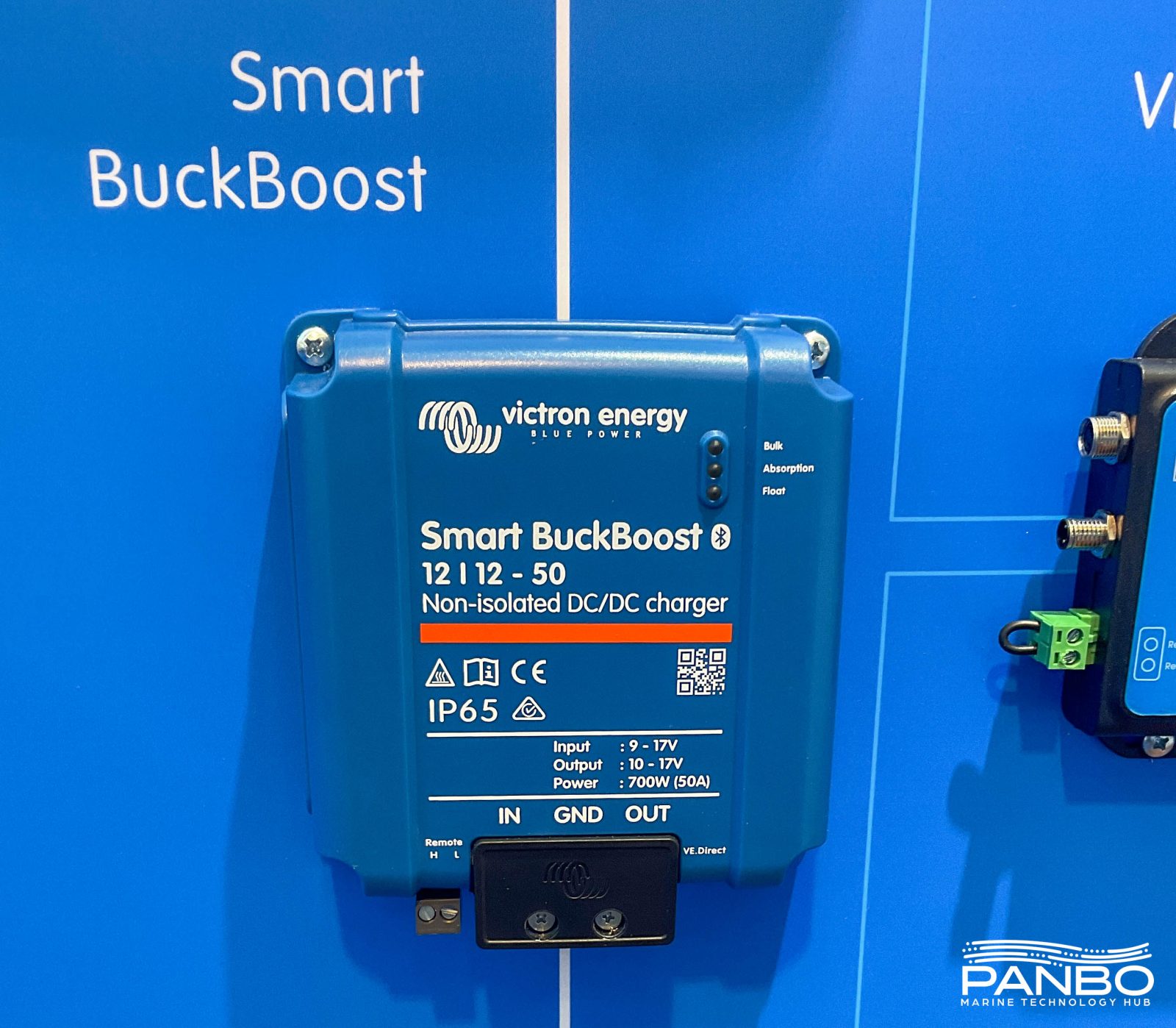
DC-to-DC converters might not be the most exciting component you will find on a boat, but they play an important role in many modern power systems. Perhaps in part because of their lack of sex appeal, the selection and features of DC-to-DC converters have, until now, been limited. Fortunately, that seems to be changing.
DC-to-DC converters can play quite a few roles in a boat’s DC power system. Their two most common applications are charging batteries of different chemistries — like LiFePO4 from an alternator setup for lead-acid — or batteries of different voltages. Until recently, the main voltage conversions were between 12 and 24-volt systems, but the increasing use of 48-volt systems has increased the demand for conversion between 48 volts and both 12 and 24 volts.
However, as demand has increased, Victron has been slow to increase the size and voltage options. Supply chain issues and scarce engineering resources have delayed Victron’s rollout of additional models. In fact, they currently don’t offer an Orion-TR Smart model that converts to or from 48 volts. In Victron’s terminology, DC-to-DC converters are available as converters and smart chargers. The converters don’t have Bluetooth connectivity and output fixed voltages. The smart chargers offer three-stage charging, tunable engine shutdown detection, and Bluetooth connectivity with app control via Victron Connect.
The new model
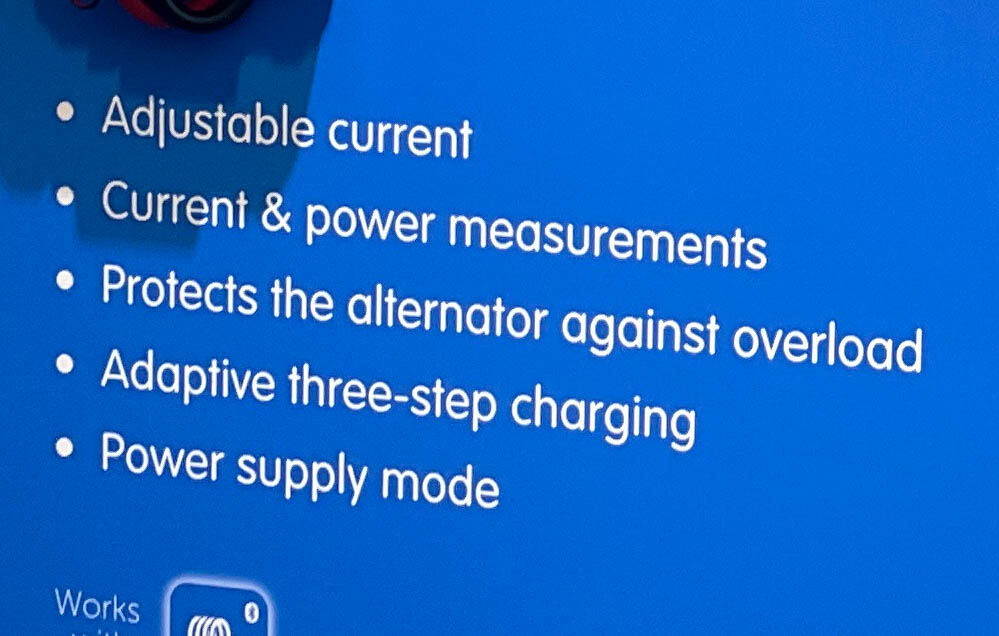
You may notice the photos from Victron’s METSTRADE booth (and even Victron’s product page for the new model currently) show the new model as the Smart BuckBoost DC-DC Charger. Victron has decided to change the product name to Orion Smart 12/12-50A Orion XS 12/12-50A DC-DC battery charger (per a late breaking update from Victron on 11/22/2023). I’m going to get into the nitty-gritty of the specs and compare the new Orion-TR Smart to the existing models. But before we get in the weeds, let me just tell you that every spec I’ve compared is better for the new model. In some cases, by a little, but in quite a few by a lot.
| Orion XS 12/12-50 (new) | Orion-TR Smart 12/12-30 (existing) | |
| Input voltage range | 9-17 V | 10-17 V |
| Output voltage range | 10-17 V | 10-15 V |
| Output noise | 10 mV rms | 2 mV rms |
| Continous output power at 40°C | 700 W | 360W |
| Efficiency | 98.5 % | 87 % |
| No-load current consumption | < 100 mA | < 80 mA |
| Operating temperature range | -20 – +60°C (derate 1.5% per °C above 40) | -20 – +55°C (derate 3% per °C above 40) |
| Bluetooth communications | Yes | Yes |
| VE.Direct communications | Yes | No |
| Weight | 0.33 kg (0.73 lb) | 1.8 kg (3 lb) |
| Dimensions (H x W x D) | 137 x 123 x 40 mm / 5.4 x 4.9 x 1.6 inch | 130 x 186 x 80 mm / 5.1 x 7.3 x 3.2 inch |
| Protection | IP 65 | IP 43 (electronics) IP22 (connection area) |
The table above is dense with specs but, I promise, these are just the most significant ones and the ones I think might make a difference to most users. The three main opportunities for improvement with the existing Orion XS chargers are: The largest 12-volt to 12-volt model maxes out at 30 amps or 360 watts, the devices get quite warm when they’re producing full rated power, and although current models have Bluetooth communications, they lack VE.Direct and hence don’t integrate with Victron GX devices running Venus OS.
I’m pleased to report that each of the three shortcomings I mentioned above is being addressed by the new unit. The 12-volt to 12-volt, 50-amp model is the first to be released but more will follow. Just looking at the 12-volt, 50-amp model we see power handling a little shy of doubling. Future models likely will handle even more power, plus adding 24 and 48-volt options.
Heat generation and dissipation
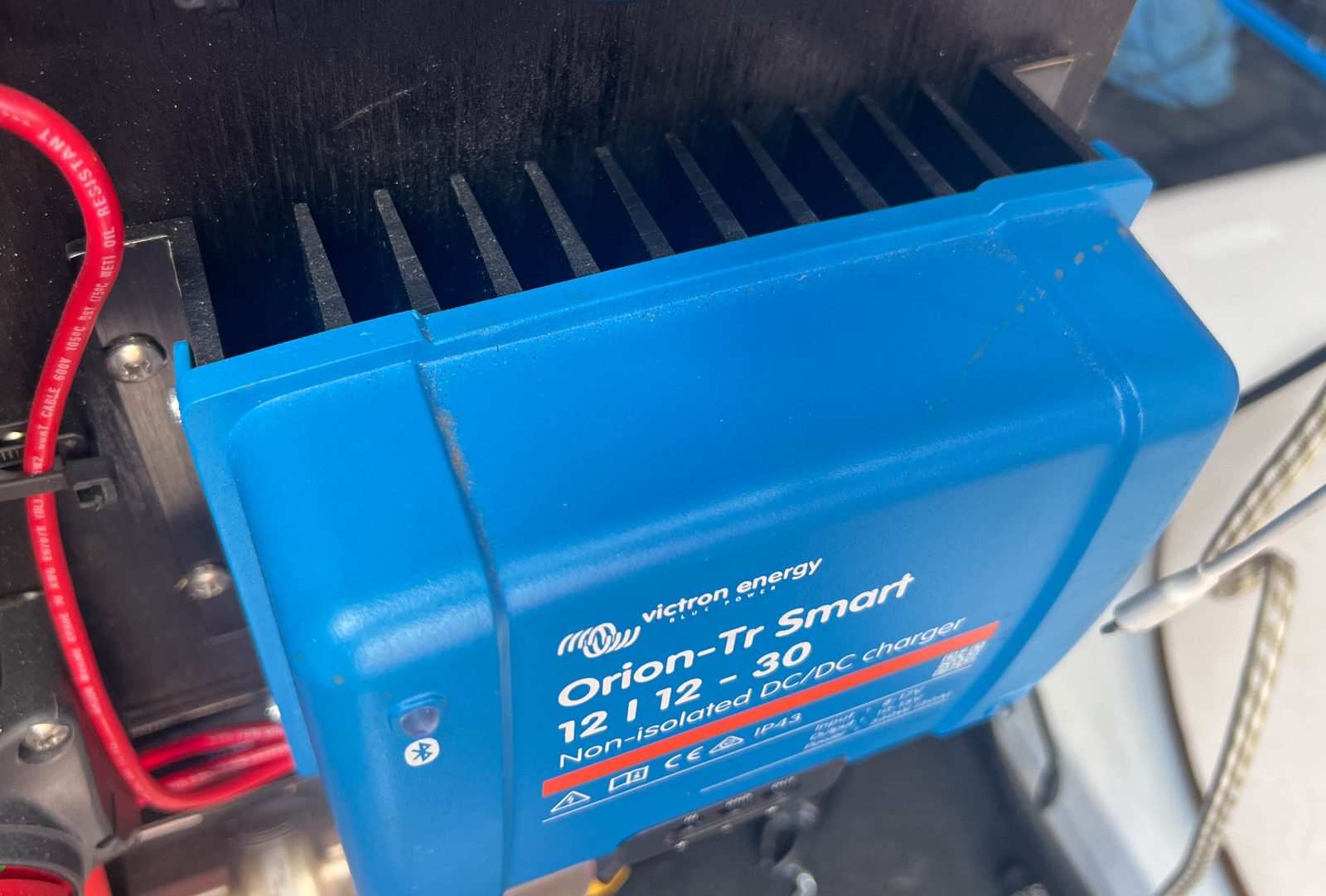

The 30-amp 12/12 Orion-TR Smart is pretty notorious for the heat it generates. A quick scan of Victron’s community shows many threads discussing the potentially alarming heat. These units generate the heat despite large aluminum heat sinks on the rear of the unit. You can see the size of the heat sinks in the left image above and the fairly extreme heat generated in the right image.
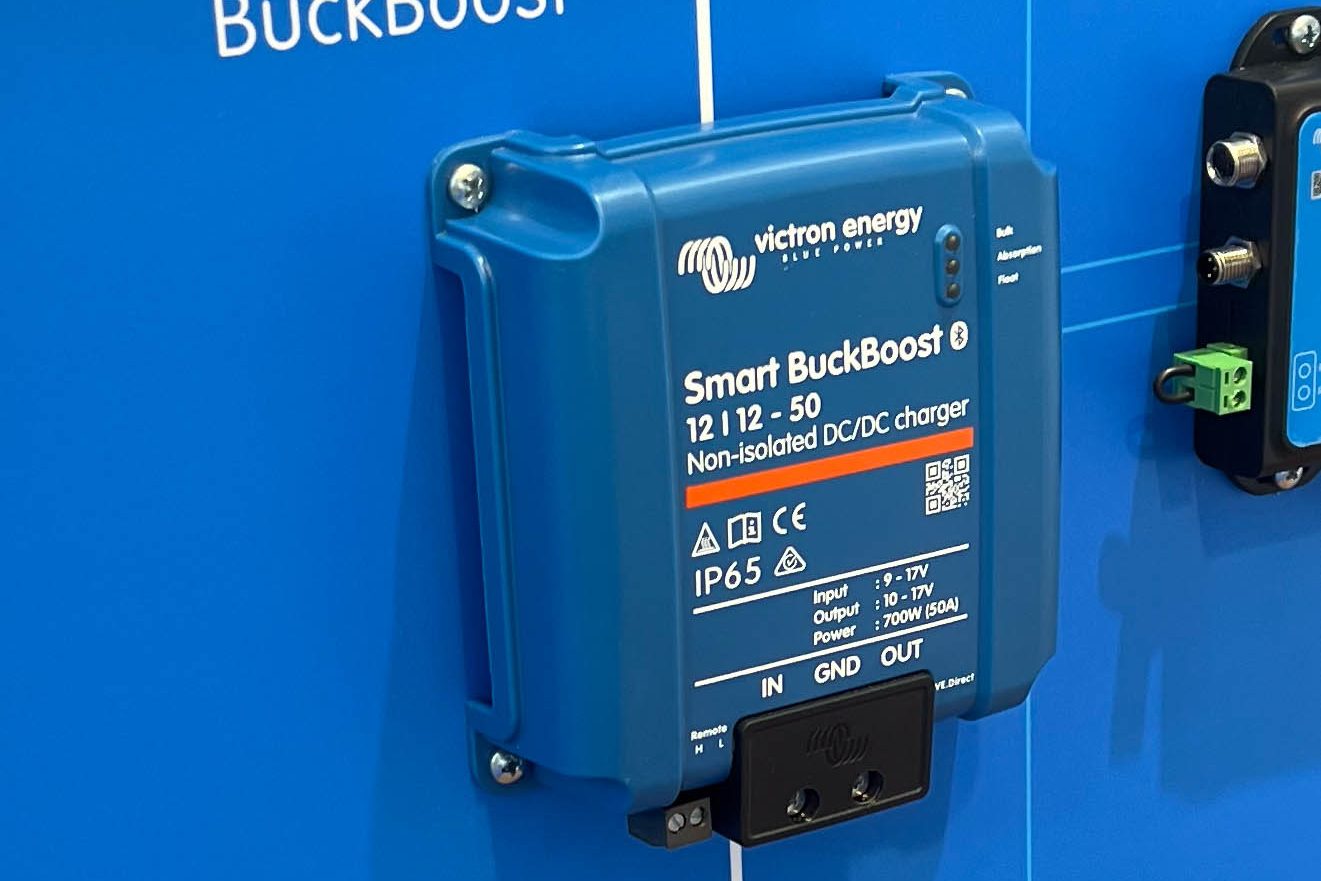
The table above gives quite a few hints about how much cooler the new unit runs. First, take a look at the efficiency. The old models claim a maximum efficiency of 87% compared to 98.5% for the new ones. Equally telling is the complete lack of visible heat sinks on the new models and drastically reduced weight. Plus, we see a significant reduction in derating that occurs as the units get hot. The new model loses 1.5 percent per degree Celsius, compared to 3 percent per degree for the existing chargers.
GX Connectivity
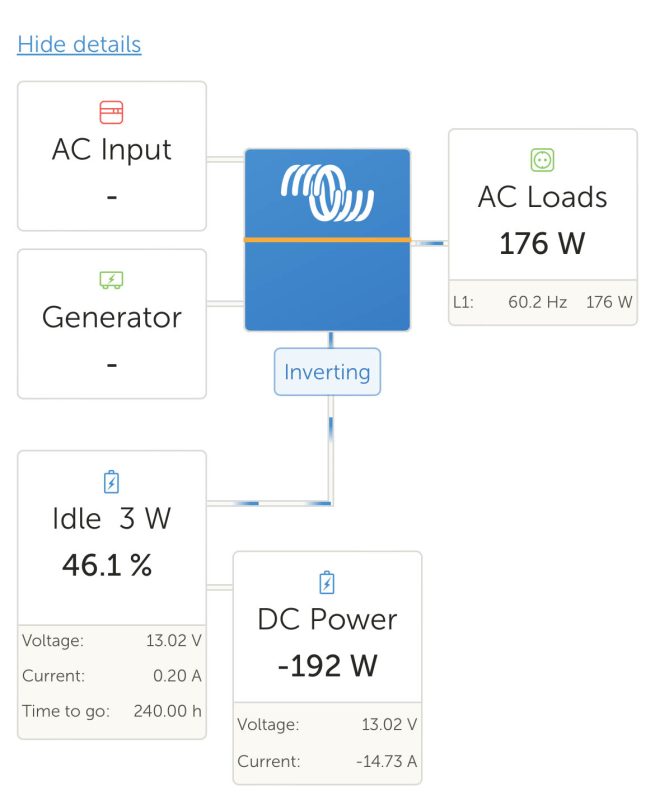
Until this model, none of the Orion line has been capable of communicating with GX devices. That communication would allow monitoring and configuration of the Orion XS chargers. Because current Orion-TR Smart chargers don’t have GX communications, any power they supply is lumped into the DC power.
Current control
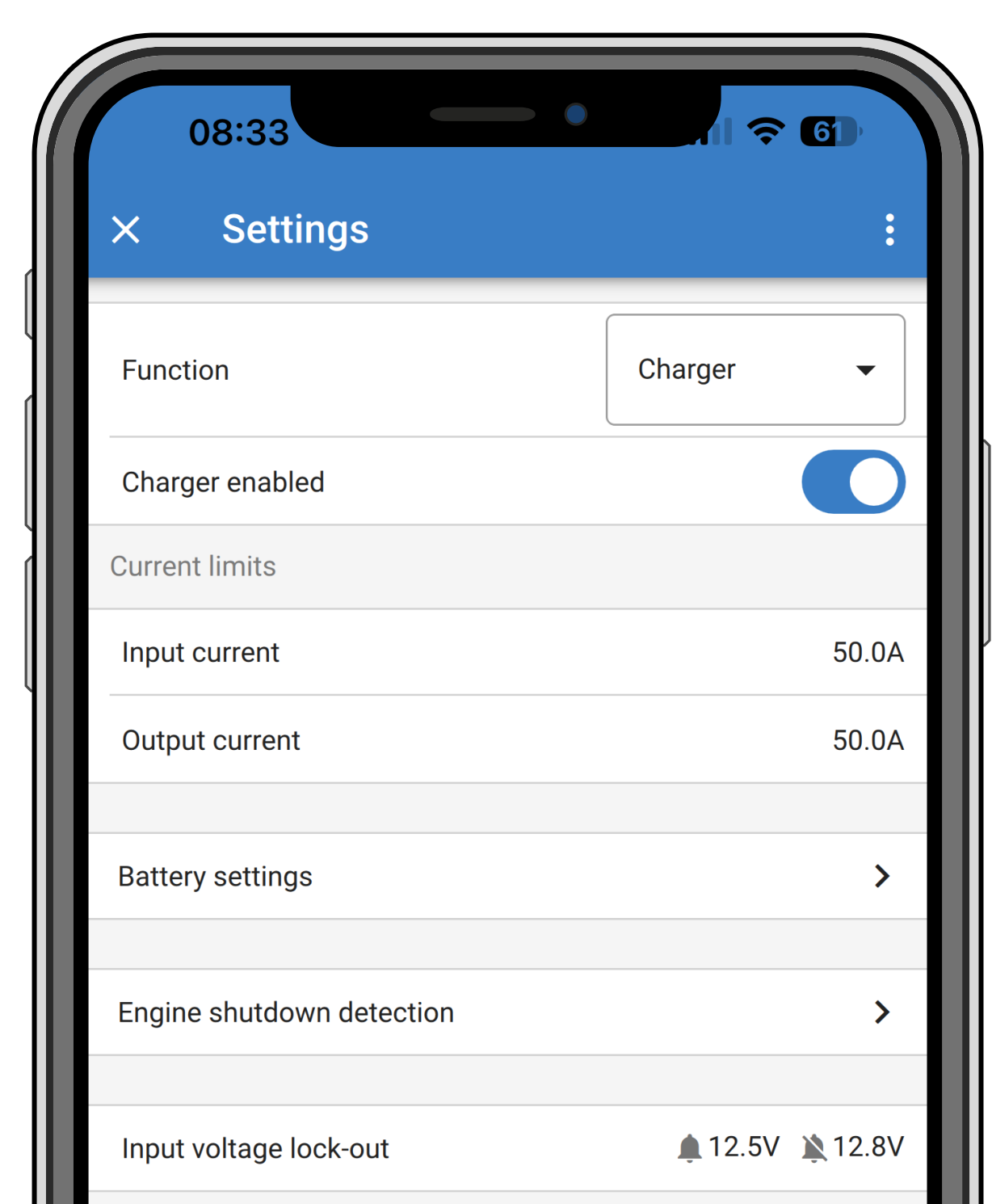
Previous Orion-TR Smarts didn’t have configurable power outputs. Instead, the units output the maximum power they could, up to their rated capacity. The new model offers fine-grained control based on both input and output current. The values can be set from 1 amp up to 50 amps in 0.1 amp increments.
Availability, pricing, and future models
Victron expects to start shipping the 12/12-50A model in January. It will list for $445. At a list of $445, it costs the exact same per amp ($8.90) as the outgoing 12/12-30A model. Given all the additional features and capabilities, that seems very fair. It appears this unit is the first of quite a few to come based on the new design and architecture. I’m looking forward to seeing models in differing capacities and voltage configurations.



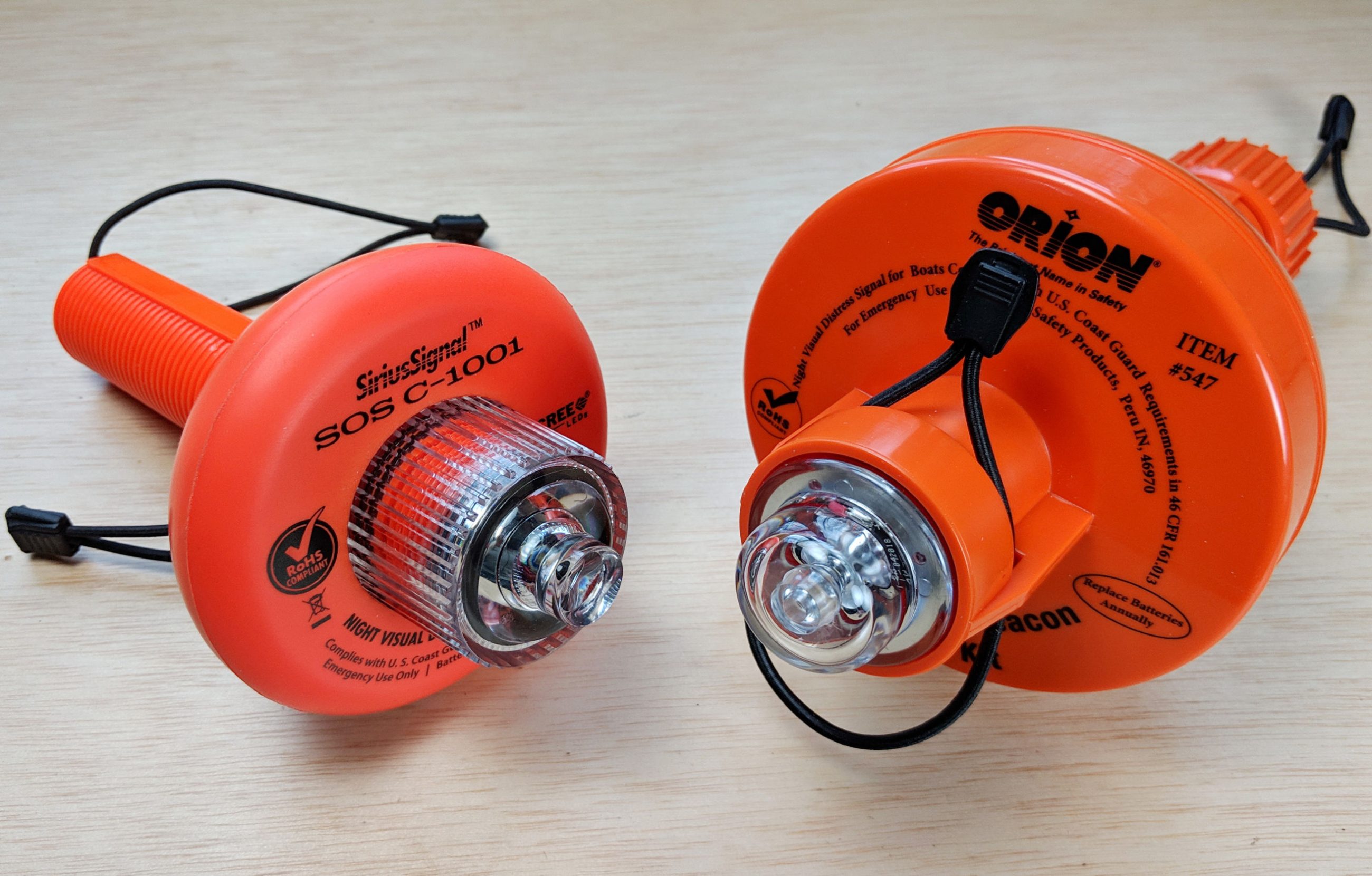
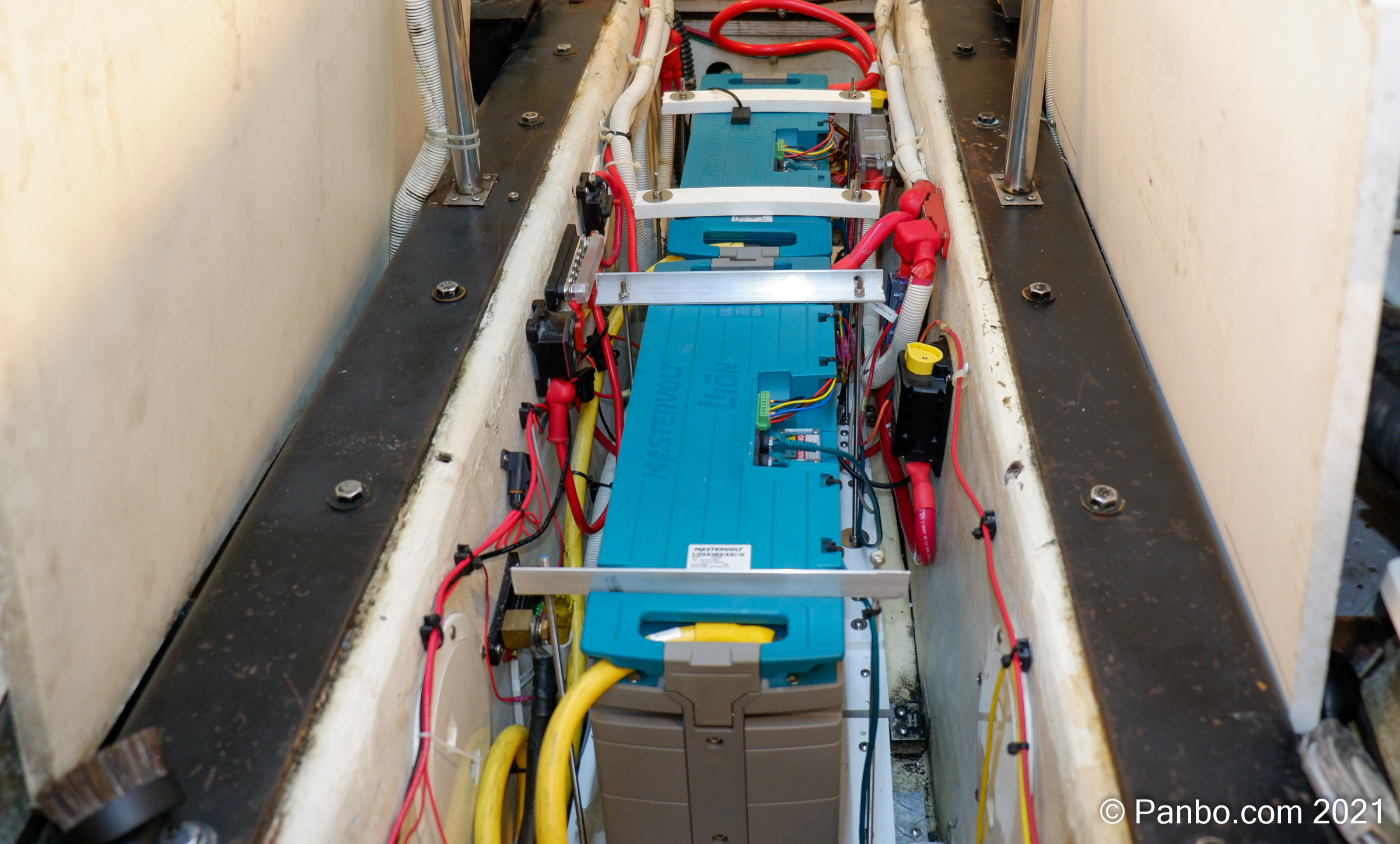
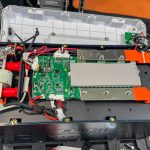






Encouraging to see Victron offer this. Wonder if they will offer 12-24 and 12-48 models?
I sure expect they will. It’s a critical part of the market and they’re definitely aware of that.
-Ben S.
I’ll be tossing out my 12V to 48V Sterling , when the Orion in the same rating is released.
Would love some 12-36love
Impressive all around in the space of a few years.
In regard to the weight, is that correct at 0.73lbs? That is a huge reduction for a device physically three times larger.
Hi Dan,
I didn’t actually pick one up; all the units I saw at METS were mounted to the stand and I think Victron wouldn’t have been amused if I tried to remove one. But, the new models are definitely a good bit smaller and lack all the heat sink fins of the old units, so I don’t think that’s a typo. I’ve verified what I published matches Victron’s published information.
-Ben S.
Dan caught my mistake. I had reversed the sizes of the two units. I’ve fixed that now. The new unit is both smaller and lighter.
-Ben S.
Sounds like a great product Ben. I’m curious how they got around the heat generation issue, must be a different design altogether perhaps?
Also, good news about the VE.direct feature – now if they could just improve those tiny, brittle JST-style connector plugs that break apart if you even look at them the wrong way! Molding a large plug on the cable might make it appear more robust, but in practice just provides more leverage to crack the connector when it’s plugged into a device….
I get the sense that Victron enjoyed a few years while Mastervolt just languished. Now MV seems to be churning out some awesome stuff that Victron doesn’t have: 50A DC-DC Chargers (this answers that), bi directional DC charging, 200A charge capable chargers (please let this be next on Victron’s roadmap), batteries with new form factors and CanBus ( and a chance of ABYC E13), etc…
Hopefully this means Victron feels the pressure and starts moving things forward with this as a start…since I already have a bunch of stupid VE.Direct runs, and like the other things my Cerbo is pulling in on display…
This feels like a total game changer for my electrical refit. Due to the incredible efficiency jump I could charge the house bank at 24v more efficiently from the generator & alternator while keeping all the pumps and even windlass at 12v.
Or am I missing something?
I don’t think you’re missing anything conceptually. But, we are all missing Victron announcing converters in voltages other than 12/12. Hopefully we will see 24, 36, and 48-volt models announced soon!
-Ben S.
The only issue here is the Amperage. Current best Orion 24/12 does 70A @ 12v. That is not enough for many windlasses. So we’d be looking for a similar doubling, or you’d have to use the Orion to top off a separate 12v battery bank – which may be what you are hitting at here. If you have electric thrusters they would need an upgrade or their own 12v banks as well.
On my own research, jumping to 48v is the point where changing voltages starts paying off. It’s also the direction the industry at large is heading.
( Robot voice) Error! Error!
We use a Victron Orion TR DC-DC, 24-48 volt converter to power our Starlink.
They do make to/from 48 volt devices.
I’m definitely human and happy to admit a mistake when I make one. But, although the difference is easy to miss, in this case there’s no error. Victron does make Orion-TR Converters in 48 volts, they don’t make any Orion-TR Smart Chargers in 48. At least I ‘ve never seen a charger in 48-volts and Victron’s site doesn’t show any.
-Ben S.
So is it possible to charge my lithium bank when running my outboard engine (alternator) and also keep my starting battery trickle charged when I leave the boat with this one device? Is “bi- directional” the correct term I’m looking for?
Hi Tony,
I believe you are asking about bidirectional capabilities. This model doesn’t yet offer bidirectional conversion, though I know Victron is aware of models starting to creep into the market with these features. So, I’m optimistic they may soon offer bidirectional units as well.
-Ben S.
Is a ARCO Zues like alternator regulator in Victon’s future? They have almost all the bits to do this, including VE.Direct, shunt/battery monitor products.
Is a ARCO Zues like alternator regulator in Balmar’s future? They have all the bits to do this, just need software I believe.
I’m looking forward to more advancements as tech that is trickling down from the EV and storage market promising greater efficiency and performance that the marine and RV market could never justify alone. Specifically ultra-efficient bi-directional DC-DC tech being driven by V2G (i.e. vehicle to grid – the ability to have your EV car charge back to the grid).
Looks like a welcome advance! Small & efficient (cooler!) is always better. I’ve been looking for a 12/24 charger that I could use to keep my 24V bow thruster battery topped up.
What I’d REALLY like is a small unit – 5-10 amps at 24V would be fine – I don’t want to run heavy wiring all the way up forward, and the thruster is only used intermittently.
This sounds perfect to save my alternator from the LiFePO4 house battery conversion. But are they actually available anywhere yet?